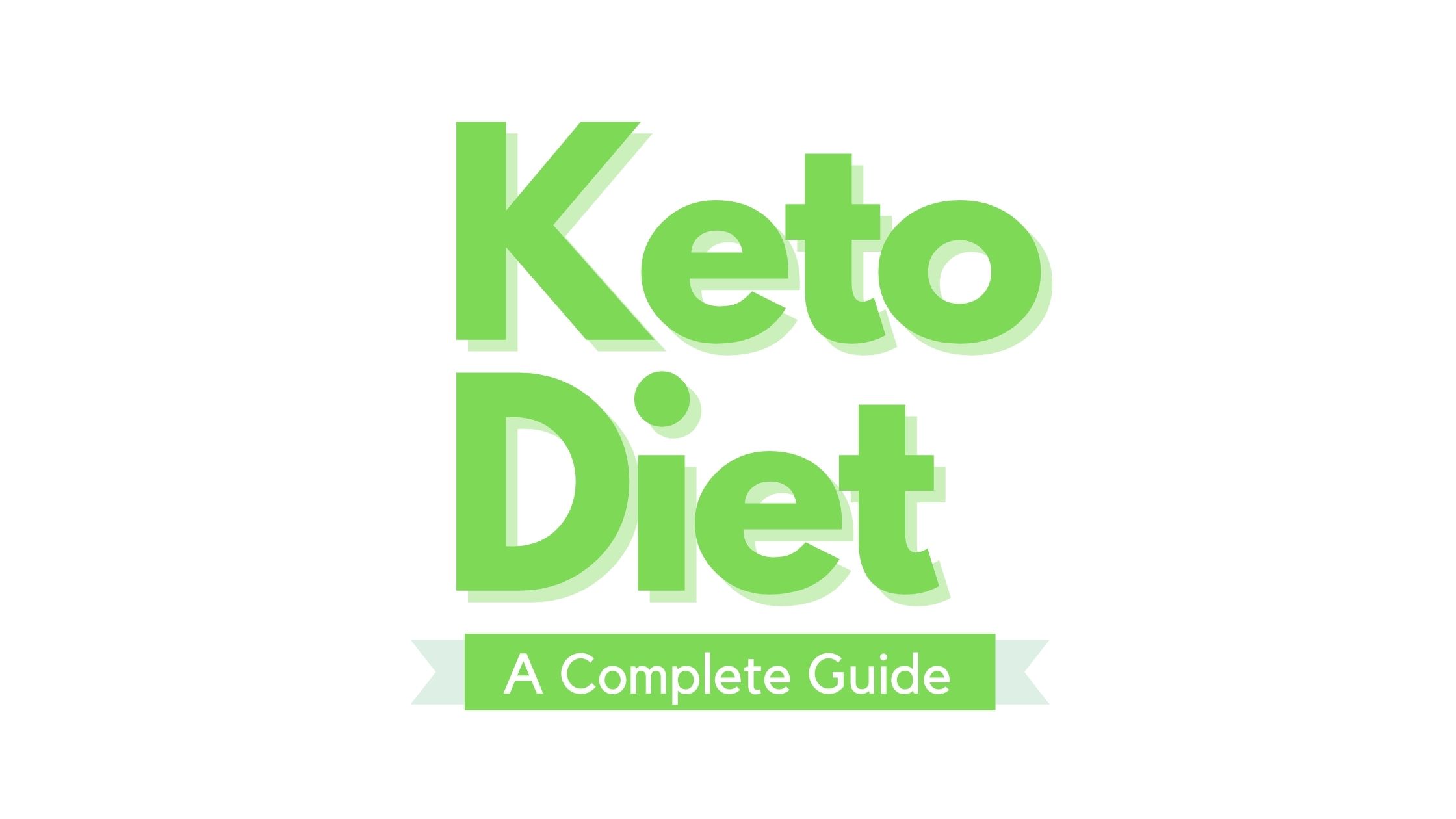There’s no denying that the keto diet is the hottest weight-loss trend right now! In fact, keto was one of the top 10 topics that dominated Google’s 2019 diet searches.
Major brands like Amazon are now selling keto-friendly products, keto recipes have taken over the internet by storm, celebrities like Kourtney Kardashian back it up, and even controversial keto documentaries have taken over Netflix.
A keto or ketogenic diet is a low-carb, medium protein, high-fat diet that can help you lose body fat more effectively. Along with weight loss, it has additional benefits in terms of health and performance, as shown in over 45 studies. 1https://www.ncbi.nlm.nih.gov/pubmed/26768850
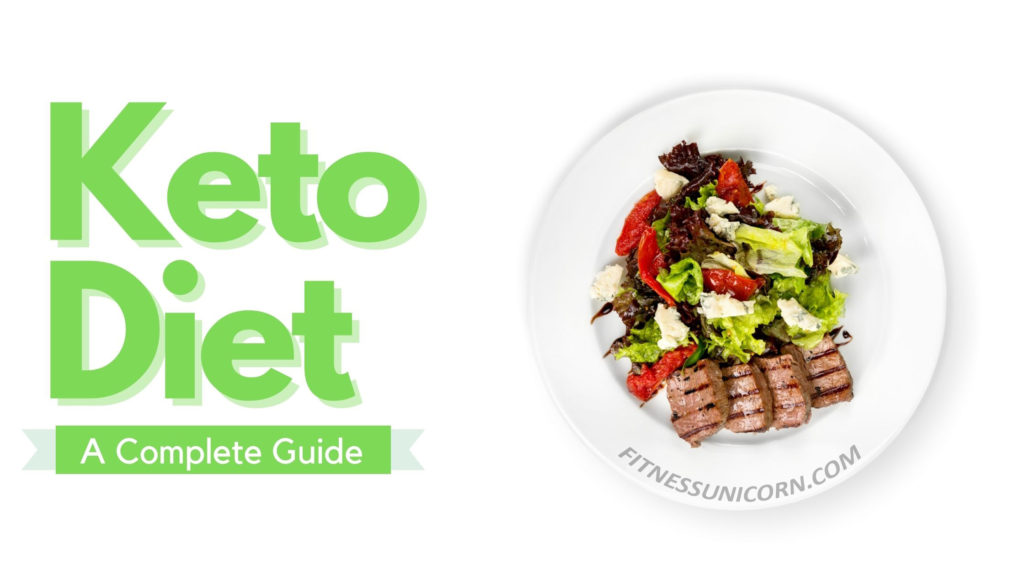
The keto diet is popularly known by many different names – ketogenic diet, low carb high fat (LCHF), low carb diet, etc.
It is known to help people lose a lot of excess weight in a short span of time. There is also evidence that low carb diets such as keto may have benefits against diabetes, cancer, epilepsy, and Alzheimer’s disease.
Here’s literally everything you need to know.
What is Keto Diet
“Ketogenic” is a term used for low-carb diets. The principle idea is to get more calories from protein and fat and the least from carbohydrates. This significant reduction in carbs puts your body into a metabolic state known as ketosis.
When you eat a high carb meal, your body produces glucose and insulin.
- Glucose is the easiest source of energy for your body and hence it is always preferred over any other source.
- Insulin helps your body turn glucose into energy. It also stores the extra energy into your muscles, fat cells, and liver.
On our typical high carbohydrate diet, the body gets a steady source of carbs to utilize for energy requirements. The fats are not needed and hence they are stored inside the body. When we reduce the consumption of carbohydrates to as low as 25 grams per day, the body shifts into a state called “ketosis.”
Ketosis is a process that happens when your body doesn’t have enough carbohydrates to burn for energy. Instead, it burns fat and makes things called ketones, which it can use for fuel. –WebMD
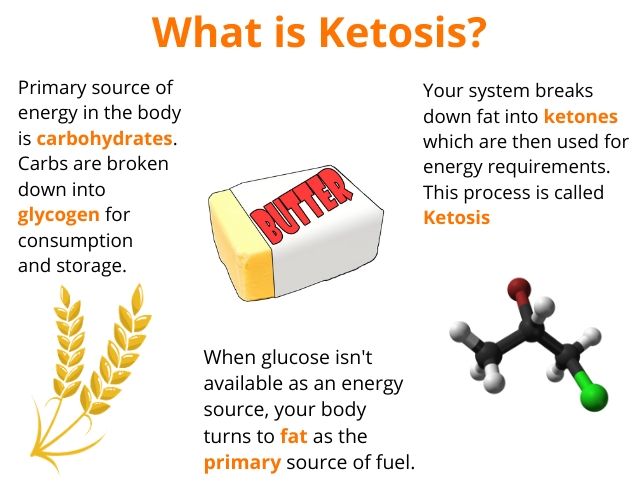
The body turns to ketosis as a survival instinct response when we reduce carbs drastically. Our liver then breaks down the fat cells into small energy molecules called Ketones. The ultimate goal of adopting a low carb lifestyle is to reach the metabolic state of ketosis.
Along with significant weight loss in a short amount of time, the keto diet also offers various health benefits which are further discussed in this article.
Check out this recent scientific case study on the keto diet.
Scientific Case Study on Keto
Samaha, F. F. et al. – A low-carbohydrate as compared with a low-fat diet in severe obesity.
About the study: In this study, 132 individuals with high obesity (having an average BMI of 43) followed either low fat or a low carb diet for 6 months. Many had metabolic syndrome or type 2 diabetes. The low-fat group had restricted calorie consumption.

Weight loss: The group having a low carb diet lost an average of 12.8 pounds (5.8 kg), whereas the low-fat group lost only 4.2 pounds (1.9 kg). This difference was quite significant and appealing.
Results: The participants on the low carb diet lost three times the weight as compared to the low-fat group, over a period of 6 months.
There was also a statistically significant difference in several biomarkers:
- Triglycerides reduced by 38 mg/dL in the low carb diet group, as compared to a decline of 7 mg/dL in the low-fat group.
- Fasting blood glucose levels fell by 26 mg/dL in the low carb group, but only by 5 mg/dL in the low-fat diet.
- Insulin levels dropped by as much as 27% in the low carb diet, whereas they increased in the low-fat group.
- Insulin sensitivity improved on the low carb diet, but it worsened slightly on the low-fat diet.
The low carb diet gave promising results in terms of weight loss and other essential biomarkers in this study.
Let us see what amount of carbohydrates is required to shift into ketosis mode and start utilizing fat for energy instead of glucose.
Carbs in a Keto Diet
A healthy keto diet ranges from 20 grams to 50 grams of net carbs per day, depending on individual factors.
Some of us can easily get into ketosis on 50 grams of carbs per day while others might need to limit daily intake to 20 grams in our keto diet meals.
The ketosis diet only considers “net carbs” and not the total carbs present in your meals. So you might be wondering “What are net carbs?”
Net carbs are essentially the total carbohydrates in a food minus its total fiber content. Fiber is a type of carbohydrate that your body can’t digest. So it does not interfere with ketosis as fiber does not trigger an insulin response in the body.
To calculate the net carbs in whole foods, subtract the fiber from the total number of carbs. In order to calculate the net carbs in processed and packaged foods, we need to subtract the fiber and a portion of the sugar alcohols.
For example, A medium-sized bell pepper has 8 grams of total carbs and 3.5 grams of fiber. Therefore, the net carbs come out to be 4.5. This is the number you need while calculating your daily carb intake in your keto diet.
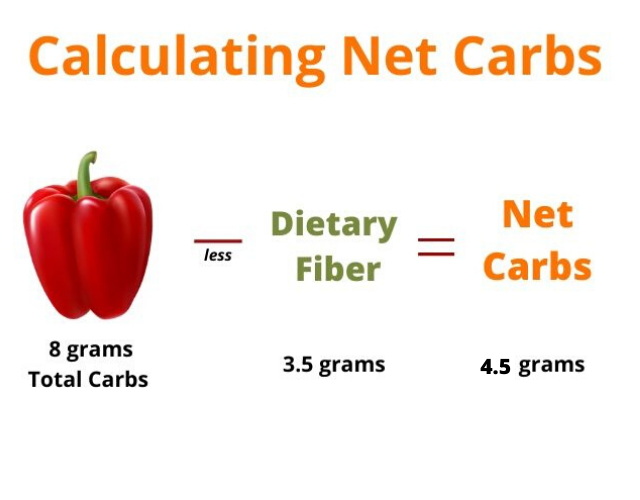
Now you might be wondering about exactly how to get started on keto. As stated earlier, the exact number of carbs will vary from person to person, but it has been observed that 35 grams of total carbs and 25 grams of net carbs work fine for majority of people.

Most healthy people can go as low as 20 grams of net carbs daily to get the maximum benefits from keto diet.
However, a “keto for dummies” recommendation would be 35 grams of net carbs.
There are also some other factors that influence your daily carb limit on the keto diet.
These factors are:
- Exercise
- Keto Adaptation
- Types of Carbs
- Stress and Emotions
Visit this keto carb guide for detailed information on these factors.
So you have a fair idea about the keto diet basics and how many carbs are required to enter keto. Now let us see the types of foods that can be consumed to stay in ketosis.
What can you eat on a keto diet
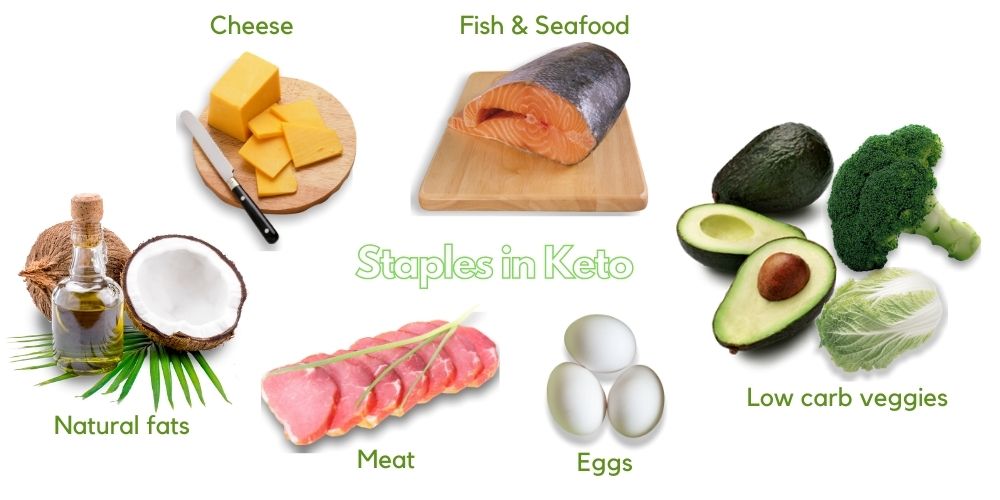
1. Low-carb vegetables
The keto diet rules recommend leafy and green vegetables that grow above the ground: Cauliflower, cabbage, avocado, broccoli and zucchini, kale, spinach, okra, etc.
You can also use low-carb veggies as condiments (pickled okra) or appetizers/probiotics (sauerkraut).
Most of the vegetables consist of very few net carbs. However, even one serving of starchy vegetables like potato or plantains can fully exhaust your daily carb allowance.
Non- starchy vegetables can have 1-7 grams of net carbs per cup.
2. Meat & Poultry
Go for unprocessed meats like beef, chicken, bacon, and pork. Grass-fed sources are even healthier as they have higher amounts of healthy omega-3 fatty acids.
Meats and Poultry are the staple food items in keto diet. They are a great source of high quality protein and are rich in B vitamins and several minerals, including selenium, potassium, and zinc.
3. Eggs
One large egg provides less than 1 gram of carbs and 6 grams of protein.
You can have your eggs any way you want – scrambled, fried, omlete, boiled. Eggs are the most versatile and flexible food item on the planet. Another benefit of eggs is that they modify the shape of LDL in a way that reduces the risk of heart disease
It is advisable to eat no more than 35 eggs in a single day.
There are lots of ways to eat eggs on the keto diet. One of my favorites is the keto Egg Foo Young! It’s an American-Chinese omelet loaded with low-carb veggies and meats.
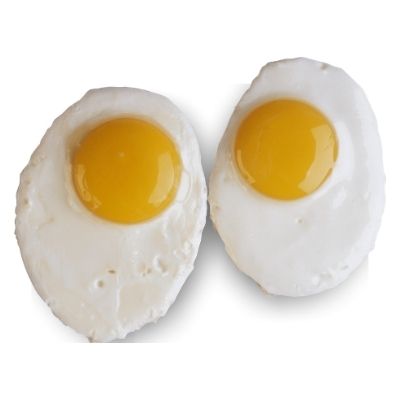
4. Fish and Seafood
All fish and sea-foods are great keto diet recipes, especially high-fat options like salmon. Wild-caught fishes are probably the best for overall health.
Salmon, sardines, mackerel, and other high-fat fishes are very high in omega-3 fats, lowers insulin levels, and boost insulin sensitivity for better weight loss on keto.
The carbs in different types of shellfish vary. For example: while shrimp and most crabs contain no carbs, other types of shellfish do.
Aim to have two to three servings of seafood in a week.
5. High Fat Dairy
High-fat dairy products like butter, cheese, heavy cream, ghee are great for the keto diet. These are also rich in conjugated linoleic acid, which further promotes fat loss.
However, milk is strictly prohibited in keto since it has a lot of carbs in the form of milk sugar. One glass of milk has around 15 grams of carbs. Buttermilk on keto can be used sparingly in recipes and baked dishes.
There have always been myths around the consumption of high-fat dairy and its links to heart attack and stroke. However, recent studies2https://pubmed.ncbi.nlm.nih.gov/20372173/ suggest that moderate consumption of high-fat dairy lowers the risk of such diseases to some extent.
6. Nuts & Seeds
Nuts and seeds are high in fats and low in carbs which can help you feel full for longer and also prevent hunger.
Here are the carbs estimates for 1 ounce (28 grams) of some common nuts and seeds:
- Almonds: 3 grams net carbs (6 grams total carbs)
- Cashews: 8 grams net carbs (9 grams total carbs)
- Macadamia nuts: 2 grams net carbs (4 grams total carbs)
- Pecans: 1 gram net carbs (4 grams total carbs)
- Pistachios: 5 grams net carbs (8 grams total carbs)
- Walnuts: 2 grams net carbs (4 grams total carbs)
- Chia seeds: 1 gram net carbs (12 grams total carbs)
- Flaxseeds: 0 grams net carbs (8 grams total carbs)
- Sesame seeds: 3 grams net carbs (7 grams total carbs)
You can have these in moderation, but be careful not to over eat while snacking on these.
7. Berries
Fruits are generally not so keto-friendly as they are high in carbs. However, there are some berries that make it to the exceptions list.
Berries are high in fiber and low in carbs. Blackberries, raspberries, strawberries, and blueberries are all great for the keto diet.
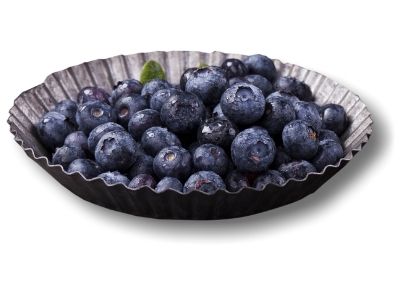
8. Other natural fats
Since most of your calories will come from fat, you have plenty of other high fat options to include in your daily meals.
These include olive oil, cooking in butter, coconut oil, high-fat sauces such as Bearnaise sauce, and garlic butter.
Coconut oil contains medium-chain triglycerides (MCTs). MCTs are taken up directly by the liver and converted into ketones to be used as a quick source of energy. Olive oil is an ideal base for salad dressings as it contains zero carbs.
Suggested: Is Sesame Oil Keto?
Foods to Avoid in Keto
The keto diet follows a simple formula – low carb and high fat.
These are the food items that you must avoid in your meals while on the keto diet.
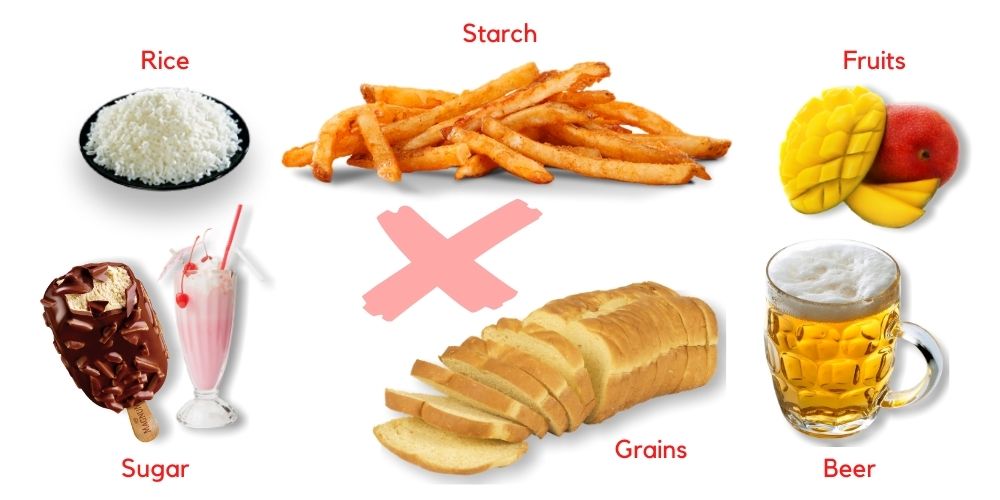
1. Grains
It is best to avoid all types of grains including:
- Oatmeal
- White
- Flour & corn tortillas
- Wheat
- Rye
- Sourdough
- Oats
- Corn
- Buckwheat
- Sandwich wraps
- Quinoa
- Sorghum
- Barley
- Rice
2. Fruits
The only fruits that can be your friends on the keto are berries, avocados and olives.
Avoid these fruits at all costs:
- Tangerines
- Oranges
- Apples
- Pears
- Grapes
- Pineapples
- Bananas
- Peaches
- Fruit Juices
- Mangos
- Dry fruits like rasins, dates
3. Starchy Vegetables
As stated earlier, the only source of veggies good for keto are the ones that grow above the ground.
These are some of the starchy vegetables that you must be avoided as per keto diet rules:
- Potatoes
- Sweet potatoes
- Yams
- Peas
- Corn
- Artichoke
- Parsnips
- Cassava (Yuca)
4. Dairy
Low fat and high carb dairy is your enemy when it comes to keto.
These include:
- Milk and condensed milk
- Creamed cottage cheese
- Low fat or fat-free yogurt
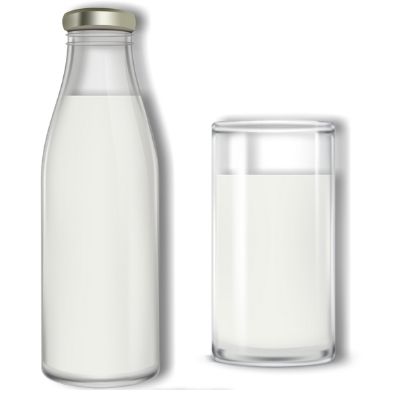
5. Beverages
Beverages can be very tempting and if you are not careful, they might throw you out of ketosis due to high carbs.
Avoid these beverages at all costs:
- Colas
- Hot Chocolate
- Sweetened coffee
- Mocha
- Cocktails such as margaritas, screwdrivers
- Grape Soda
- Root Beer
- Energy and Sports Drinks (with sugar)
- Fruit juices
- Lemonade
- Sweetened iced tea
However, please remember that there are no good and bad foods for keto. But a lot of common foods are high in carbs which can completely exhaust your daily carb limit and might even throw you out of ketosis.
Note: There are many so-called “keto-friendly” packaged products available in the market today that do not work well with weight loss and metabolic issues. They might have hidden carbs and additives that further fuel your cravings.
Keto Diet Plan for Beginners
For those who want a kickstart in their weight loss journey, we have curated a one-week ketogenic diet plan which has easy to make recipes and also satisfies your nutritional requirements.

Monday
- Breakfast: Cheese and veggie omelet with salsa
- Lunch: Chicken mayonnaise salad with onion, avocado, tomato, almonds
- Snacks: Celery sticks with almond butter
- Dinner: Chicken breast with mashed cauliflower and beans
Tuesday
- Breakfast: Keto pancakes with berries and cream
- Lunch: Keto caesar salad
- Snacks: Handful of walnuts with some berries
- Dinner: Garlic butter steaks with mushroom and asparagus
Wednesday
- Breakfast: Omelet with mushroom, peppers, and broccoli
- Lunch: Grilled salmon with leafy greens and tomato
- Snacks: Flax crackers with cheese
- Dinner: Roasted chicken with asparagus and sautéed mushrooms
Thursday
- Breakfast: Bulletproof coffee, hard-boiled eggs
- Lunch: Tomatoes stuffed with tuna salad
- Snacks: Kale chips
- Dinner: Grilled beef kebabs with peppers and sautéed mushrooms
Friday
- Breakfast: Almond milk smoothie with nut butter, chia seeds & protein powder
- Lunch: Lettuce-bun beef-burger with guacamole and salad
- Snacks: Cheese slices with bell peppers and nuts
- Dinner: Chicken and broccoli casserole
Saturday
- Breakfast: Boiled eggs with mayonnaise
- Lunch: Sardine salad with mayo in half-cut avocado
- Snacks: Sticks of celery and pepper with guacamole
- Dinner: Mexican style cauliflower rice
Sunday
- Breakfast: Fried eggs with bacon and greens
- Lunch: Poached salmon avocado rolls wrapped in seaweed (no rice)
- Snacks: Full-fat yogurt with crushed pecans
- Dinner: Beef stew made with beef broth, onions, celery, herbs
This can be a great start for people who want to experiment with keto. All of the meals are beginner friendly and require no special efforts.
For those times when you are stuck in traffic and struggling to fight your hunger cravings, snacks like beef jerky come in handy.
You can visit our guide for keto diet plan for beginners where you can find how to further customize this meal plan according to your needs. We have also mentioned some keto-friendly snacks in the article.
How to know if you are in ketosis
For a keto beginner, it might be hard to know if you are actually in ketosis and burning fat. You might even question yourself “Am I doing this keto thing the right way?”
Giving up those delicious carbs can be very hard, and if you are not certain of the direction you are going in, things can get overwhelming!
Please note that it can take up two weeks to get into ketosis even when you are having the right amount of carbs, fats, and proteins.
So how will you know when you’ve reached ketosis? Well, your body offers some clear indications along the way. Some are appealing (weight loss and reduced bloating), while others are not so welcomed.

All are signs that your body is making transitioning from utilizing glucose (carbs/sugar) for energy to using ketones. This set of symptoms is also referred to as the “keto-flu” – which is neither contagious nor dangerous.
If you want to know whether you’re moving into ketosis, look for the following changes in your body:
1. Keto Breath
Keto breath is a fruity, acetone, or metallic smell to your breath.
When you first start producing ketones, your system will create more than it can utilize at once, and hence you can smell the acetone from the breath. As you go deeper into ketosis, you will get more efficient and the keto breath resolves.
2. Weight Loss
As your body becomes more used to keto and starts utilizing fat cells for energy, you will experience more weight loss over time. The first week’s weight loss will mostly be out of water weight.

3. Fewer Cravings
As you enter into ketosis, you’ll crave fewer snacks, sweets, and treats and your sweet tooth might calm down.
This high fat, low carb diet lowers your cravings because of the following:
- It lowers ghrelin levels – the hunger hormone
- Reduces neuropeptide Y – an appetite-stimulator in your brain
- Keto diet boosts CCK, a peptide that makes you feel full for longer
If you feel like you can go up to 6 hours without craving for food, its safe to say that you’re in ketosis.
4. Fatigue
You might feel a sense of fatigue as you begin the keto diet. And the reason for such fatigue is dehydration.
As you enter ketosis, your body produces less insulin and uses up its glycogen stores. As a result, your body excretes more water with the glycogen (which also gets rid of water weight).

Make sure you stay well hydrated throughout the day. Another useful tip is to add a pinch of Himalayan salt to your water. It will help balance your electrolytes, which are depleted due to the quick water loss.
Additionally, you can have seasonings like Tajin to boost your electrolyte consumption through foods.
5. Insomnia
You might have trouble having good quality sleep in your first few days into ketosis. Usually, it’s a result of carb withdrawal. Simple carbs and sugar are very addictive and hence elimination can lead to withdrawal symptoms.
Sometimes you can be stuck in between i.e. you are neither eating carbs nor your body has started utilizing fats yet. This is one of the reasons for insomnia in the beginning phase of the keto diet.
6. Digestive problems
When you start restricting carbs, you’re also missing out on many fiber-rich foods — so make sure you replace them with keto-friendly fibrous vegetables like kale, broccoli, asparagus, and cauliflower.
7. Muscle Cramps
As a result of lowered insulin, your kidneys release more sodium which can throw your essential electrolytes out of balance and lead to temporary muscle cramps. So make sure you stay well hydrated and balance your electrolytes. Try something like Propel Water instead of your regular water during the initial days of keto.
8. Technical Methods
There are also some other technical methods out there to test if you are into ketosis. The most accurate is to measure ketone levels in the bloodstream through keto test kits. You can easily order one online.
You can also use urine strips or a breath analyzer to find out the level of ketones in the body, but they’re not as reliable as blood monitors.
As a rule of thumb, you can easily get into ketosis 8 to 10 days after restricting carbohydrate intake.
Benefits of the Keto Diet
People go on a keto diet mostly to lose weight, but it can also help improve certain medical conditions, like epilepsy, type 2 diabetes, heart disease, certain brain diseases, and even acne.
Let us go through various benefits experienced in a keto diet:
1. Weight Loss
Since you are only eating fats, the body starts utilizing it as the primary energy source and you start losing weight at a rapid rate.
However, this is not the only way you lose weight with keto. The ketogenic diet also boosts your metabolism and curbs appetite due to the high-fat diet.
2. More energy
You might often notice some brain fog, confusion or fatigue after having your regular high-carb meals, but that is not the case with keto.
When your brain utilizes ketones for energy, you don’t experience the same kind of ups and downs as you do when you’re eating a lot of carbs.
When you are in keto, your brain creates more mitochondria, the powerhouse of your body cells. Hence you get a steady source of sustained energy for each cell and organ of the body.3https://www.ncbi.nlm.nih.gov/pubmed/16807920

3. Stable blood sugar
Eating high carb meals raises your insulin levels which in turn causes blood sugar spikes. In keto, you switch from carbs to relying on fats and the blood sugar spikes are gone.
Keto can be particularly beneficial for diabetics, who struggle to lower their blood glucose levels. Many diabetics are able to lower their medication or even completely come off their medication when switching to keto.4https://www.webmd.com/diabetes/keto-diet-for-diabetes
4. Strengthens your brain
Ketones in a ketogenic diet is a far more efficient fuel for the brain than glucose in a regular diet. They can fulfill up to 70% of your brain’s energy requirements.
Research shows that adopting a ketogenic diet may protect your brain from cognitive decline and improve your memory.
In a study5https://www.ncbi.nlm.nih.gov/pmc/articles/PMC3116949/ , old aged men and women at risk of dementia were put on the keto diet. They experienced improved memory function as compared to participants on a high-carb diet, within a span of six weeks.
5. Lowers inflammation
Inflamation is simply the body’s response to potentially harmful situations and events.
Chronic inflammation is when your body constantly pumps out inflammatory chemicals for months, and even years, which is the major cause of diseases like heart disease, diabetes, and certain cancers.
The free radicals in your system are the cause of inflammation, which are reduced significantly on the keto diet. This high fat – low carb diet also switches off inflammatory pathways.
6. Protects your heart
Restricting carbs to as low as 40 grams a day increases your high-density lipoprotein (HDL) levels.
HDL turns on the anti-inflammatory pathways and protects you from heart disease6https://www.ncbi.nlm.nih.gov/pubmed/23651522. The keto diet also lowers blood triglycerides i.e. the fat molecules in your bloodstream. High levels of blood triglycerides are linked to coronary heart disease.
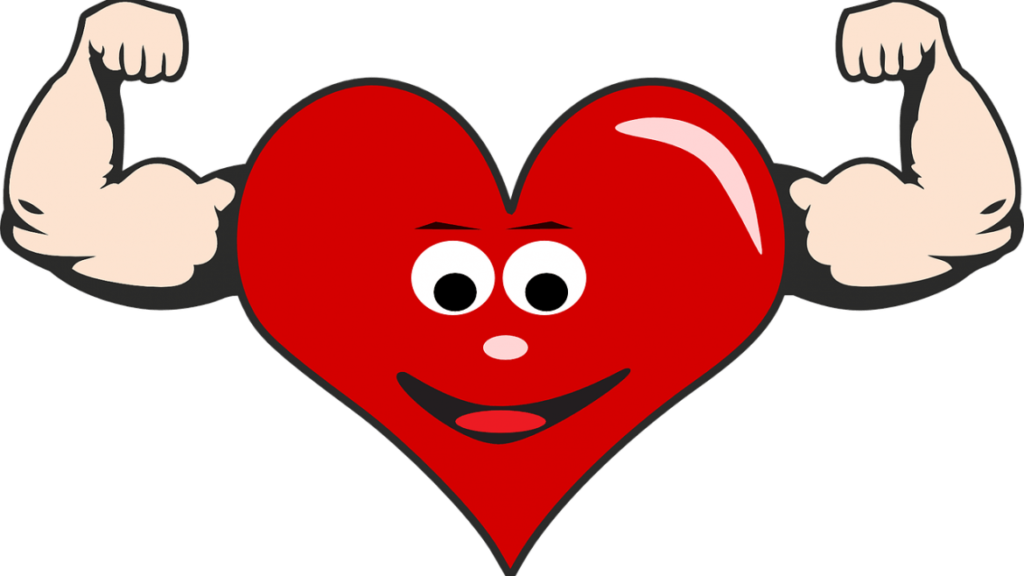
Supplements in Keto
Since the keto diet is very restrictive in terms of the foods you can have, it is a good idea to supplement with essential nutrients and minerals.
(READ: Is Premier Protein Keto?)
Some of the supplements mentioned below can help you tackle the symptoms of the dreaded keto-flu and also improve your workouts on keto.
1. MCT Oils
Medium-chain triglycerides or MCTs are absorbed differently than long-chain triglycerides that are the most common type of fat cells found in food.
MCTs are broken down by the liver in our body and dispersed through the bloodstream where they are utilized for energy by brain and muscles.
Supplementing with MCT oil can help keto dieters as it can get you deeper into ketosis and can also get rid of the symptoms of keto-flu. Along with higher weight loss, MCTs also provide the added benefits of a reduced appetite.
2. Magnesium
When following a ketogenic diet, you may find it difficult to meet your magnesium requirements, as many magnesium-rich foods like beans and fruits are strictly prohibited in this diet.
There are many forms of magnesium available in the market such as topical magnesium, magnesium glycine, and magnesium citrate. Find the form that you respond best to based on your bio-individual needs.
3. Omega 3
Sometimes people tend to rely on processed keto foods from the market that are high in omega-6 fatty acids and low in omega-3s (found in natural sources like fatty fish).
EPA and DHA found in omega-3 fats are known to reduce inflammation, lower heart disease risk, and prevent cognitive decline7https://www.ncbi.nlm.nih.gov/pmc/articles/PMC4179185/. Supplementing with Omega-3 will ensure a healthy ratio of both the fatty acids.
4. Digestive Enzymes
Vegetables contain prebiotic fiber which helps to feed our beneficial gut bacteria (probiotics). Probiotics keep your gut in a healthy state and aid proper digestion.
However, when following the keto diet, we have to eliminate all the vegetables that grow below the ground and stick to low-carb ones above the ground, like kale, cauliflower, broccoli, etc.
Additionally, since the major portion of your diet will be fats (up to 75%), it can cause unpleasant gastrointestinal issues like nausea and diarrhea for those who aren’t used to a high fat diet.
Supplementing with enzymes that can break down fats (lipases) and proteins (proteases) will help improve digestion while on keto.
5. Ketones
Ketones are essentially the energy molecules around which the concept of keto diet revoles.
There are two types of ketones in the keto universe: Exogenous Ketones & Endogenous Ketones
Exogenous ketones are ketones that are supplied through an external source, whereas endogenous ketones are produced naturally by our body through the process of ketogenesis.
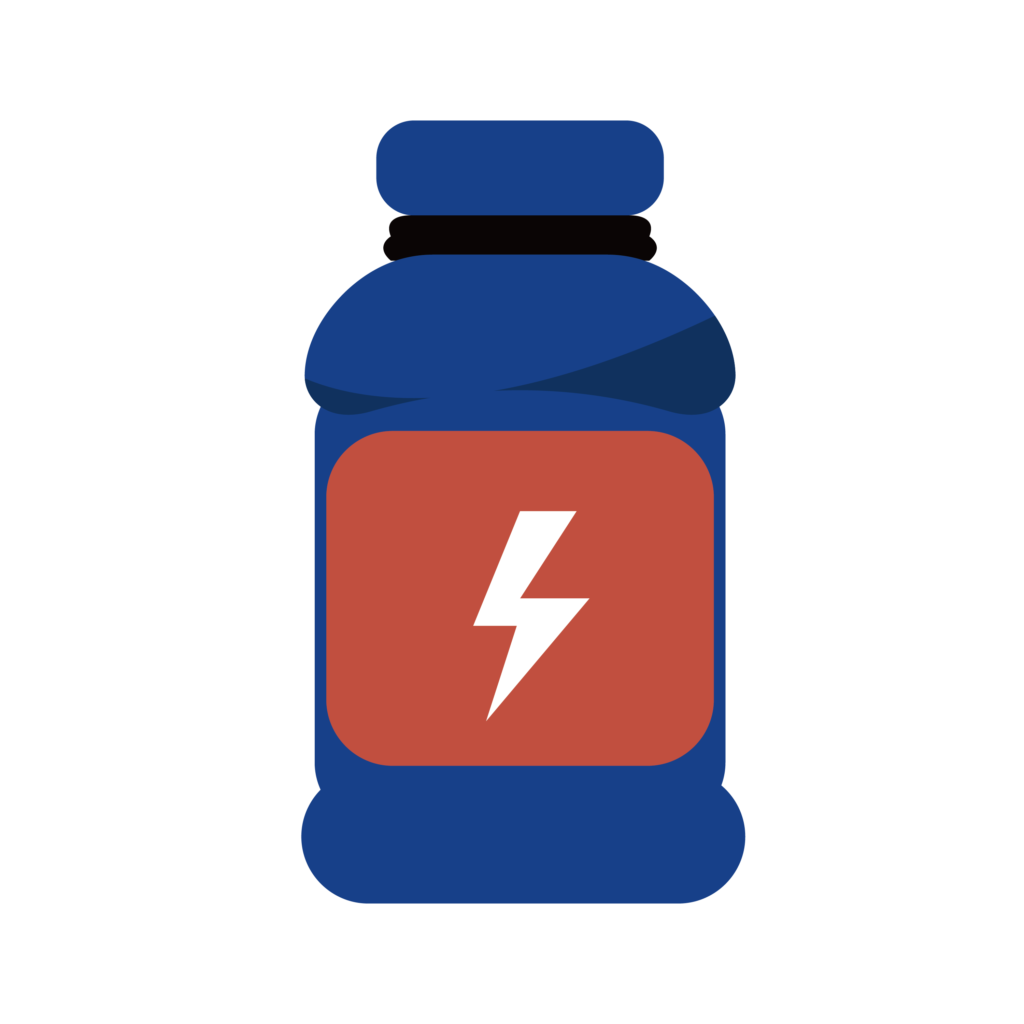
Supplementing with exogenous ketones can help you get into ketosis faster and overcome the symptoms of keto-flu. They have also been shown to boost sports performance, enhance muscle recovery, and curb appetite.
6. Electrolytes
Getting into a ketogenic diet results in increased water loss from the body as more and more glucose is pushed out along with water.
Levels of sodium, potassium, and magnesium can also drop down, leading to the symptoms of keto flu, such as headaches, muscle cramps, diarrhea, and fatigue.
Adding more sodium into your diet is one of the best strategies to combat electrolyte imbalance from ketosis. You can also go for sugarfree electrolyte drinks commonly available in the market.
Overall, you should focus on increasing the consumption of sodium, potassium, and magnesium to prevent unpleasant symptoms of the keto-flu.
Working out in Keto
While it’s not impossible to workout on the keto diet, it is definitely a different experience.
Working out can be a great lifestyle choice to complement your ketogenic diet and boost your overall health.
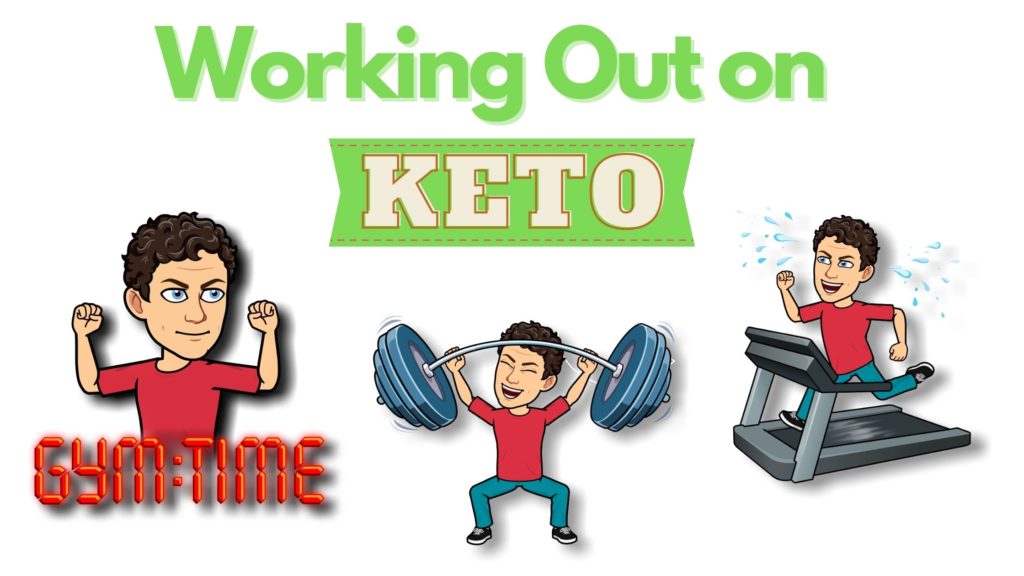
It can improve cardiovascular health, build lean body mass, strengthen your bones, and give you that endorphins rush to melt down all the stress of modern life!
There are two types of exercise: Aerobic & Anaerobic
Aerobic means ‘with air’ and refers to the generation of energy with the use of oxygen. Aerobic exercises generally include low intensity, steady-state cardio. These workouts can be easily managed when you are on a keto diet.
Anaerobic exercises are those where the energy is produced without oxygen. These include workouts requiring short bursts of energy, such as strength training, CrossFit, or high-intensity interval training (HIIT). Since they majorly rely on glucose, anaerobic workouts aren’t a good fit for the high-fat, low-carb diets.
Benefits of working out on keto
Working out on keto has given noticeable benefits in health and performance. The keto way of life isn’t particularly much of a hindrance when it comes to physical performance, contrary to popular belief.
According to a study8https://www.ncbi.nlm.nih.gov/pubmed/26892521, in a three-hour run, ultra-endurance athletes who ate low-carb for an average of 20 months, showed 2-3 times more fat burn, versus those on the high-carb diet.
Interestingly, the replenishment rate of muscle glycogen was similar in both groups.
Athletes following the keto diet have shown less fatigue during long periods of aerobic exercise along with better recovery following high-intensity workouts.
Will Keto Impact Workouts
One of the most debated topic in the industry today is whether working out on keto has additional benefits to your workouts.
Does it improve your PR in the bench press? Does it make you clock that extra mile on the treadmill?
“We have very little evidence that says the ketogenic diet is better for anything exercise-wise,” says Andy Galpin, Ph.D., an associate professor of kinesiology at California State University in Fullerton. Though for some types of exercise, it might affect performance more than others.
Overall it is a good idea to engage in low intensity, steady-state workouts to make the most out of your keto diet.
Dining Out on Keto
Following a strict diet like keto doesn’t have to crush your social life.
Having a family get together? Going for a team lunch with your colleagues? Going out on a birthday celebration and thinking whether you’ll be thrown out of ketosis?

When thinking of eating out, we often worry about being thrown out of ketosis and ruining all the weeks of hard work.
The majority of the fast-food chains serve high carb meals that are usually based around bread and sugar. However, there are some great restaurants out there that can help you relish some meals while staying into ketosis.
1. KFC
You can go for grilled chicken in any KFC as each piece of grilled chicken has less than 1 g of net carbs.
Have 3 pieces of grilled chicken along with some green beans for a delicious keto-friendly KFC meal with less than 9 grams of carbs.
2. Bunless Burgers
What if I told you that there is a keto version of our beloved craving-satisfying burgers.
A bunless burger wrapped in lettuce makes for a tempting fast-food meal within your diet constraints.
You can add these low carb toppings and dressings to further satisfy those tingling taste buds: onions, tomatoes, guacamole, mayo, mustard, bacon & cheese.
If you really want to enjoy juicy meat patties without extra carbs of a burger, check out our keto guides:
3. Buffalo Wings
Buffalo wings are juicy and delicious, widely available in pubs and pizzerias as a side option.
They are one of the best keto-friendly delicacies covered in a spicy red sauce made from vinegar and hot red peppers.
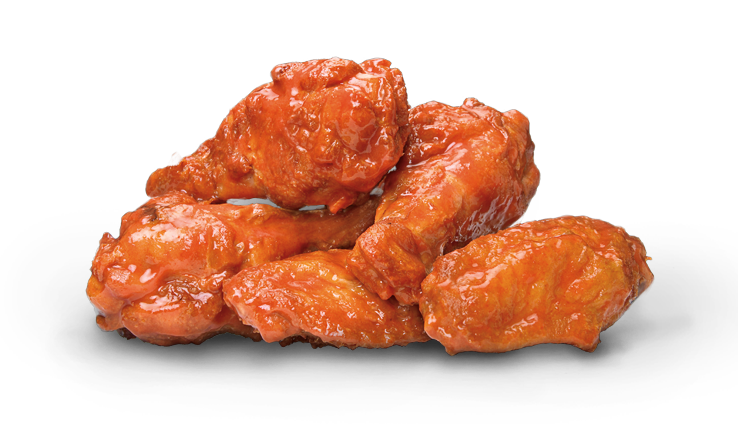
Make sure to ask how the recipe is prepared and order yours without any breading or batter.
Buffalo wings are also usually accompanied by carrots, celery, and ranch dressing. Ditch the carrot strips if you worry about going slightly above the mark.
Check out our guide: Keto at Wingstop
4. IHOP
Choose the DIY creation to craft your perfect keto meal at IHOP, which almost tastes like a cheat meal but isn’t.
Build your own omelet with avocado and spinach. Adding avocado and spinach provides healthy nutrients like monounsaturated fats and vitamin K, which are good for your heart health and bone health respectively.
However, you need to avoid the side dishes (pancakes, toast, fruit) as to stay within the daily carb limit.
5. Antipasto Salad
Italian fast food chains are generally known for high-carb delights like pizza, pasta, and subs.
But there are also healthy alternatives like Antipasto salad, which are well suited for your low carb diet.
Antipasto is a keto-friendly salad consisting of assorted meats, cheese, olives, and vegetables topped with olive oil.
You can order a larger portion of this appetizer to make it a delicious and filling meal. A single serving of antipasto salad is rich in protein and contains less than 10 grams of digestible carbs.
6. Burrito Bowls
Ditch the tortilla from the burrito to relish this mouthwatering, low carb Mexican delight.
We all love the exotic spicy flavor of burritos. They typically contain meat, vegetables, rice, and beans wrapped in a large carb-rich tortilla. A burrito can have upwards of 100 g of carbs.
Almost all restaurants have an option to serve your burrito in a bowl without the tortilla. Ditch the rice, tortilla and other high-carb items and you are all set to enjoy this keto-friendly Mexican delicacy.
Many fast-food chains offer some good low-carb options, and ingredients can be easily be modified to fit into the keto diet. Make sure you check the menu beforehand to avoid temptation and plan accordingly.
Check out: Keto at Chipotle Mexican Grill
Keto Meal Prep
The keto diet is many things but “time-saving” isn’t one of them. Since it is so restrictive in terms of food items, cooking separate meals thrice a day can be overwhelming.
One convenient route is to stock up on prepacked keto foods from your nearest supermarket, but they are often highly processed and lack the required nutrition.
This is where meal prepping comes in to save you from the agony of spending hours in the kitchen every day.
What is meal prep
Meal Prepping is simply the art of preparing some, or all of your meals ahead of time. They are similar to the convenience foods available in the market, but with better, healthier, and unprocessed ingredients.
Keto meal prep will help you better stick to the diet, even when outside food seems more tempting. If you know that your diet meal is sitting on your fridge shelf- ready to be consumed, you are less prone to go off-track.
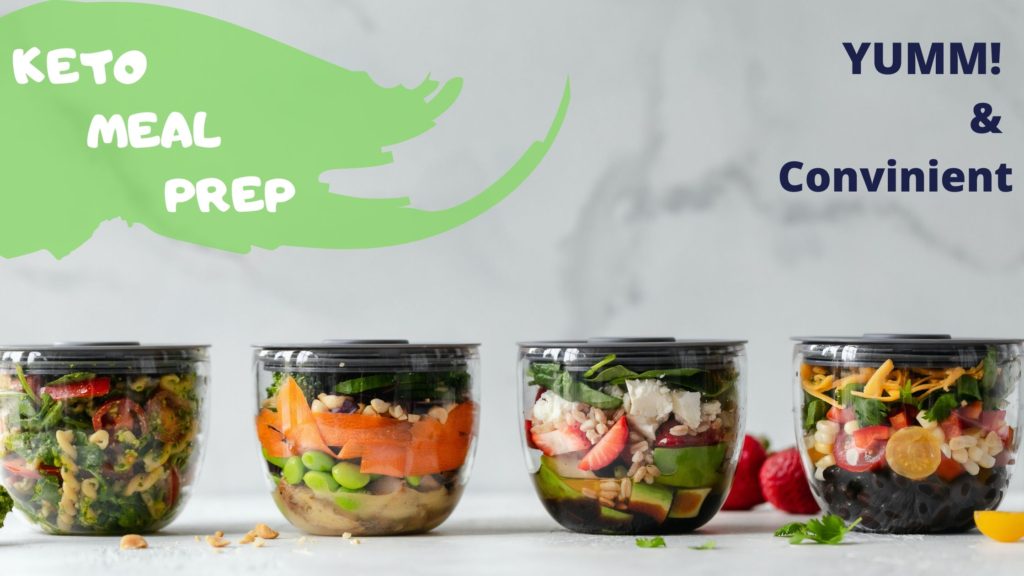
It will also ensure that you eat healthier foods more often with the proper portions, instead of jumping to quick processed and prepackaged snacks that make you gain more weight due to high calories.
A great example of meal prep is these keto peanut butter cookies, which are beginner-friendly and easy to make. One big batch can provide a whole week of snacks quota.
Most people tend to meal prep on Sunday for the next working week i.e. 5 days. You can choose the number of days depending on your style and preference. Just make sure that the ingredients can stay fresh for long enough.
Visit our keto meal prep guide which has more than 30 beginner-friendly meal prep ideas, and also tells you how to effortlessly design your own meal preps on keto.
Can You Cheat on Keto
Almost everyone is occasionally tempted, and sometimes you might just want to grab that bar of snickers and ditch the keto gods.
There can be a number of reasons you are tempted to go off your diet for a day, such as:
- Going through a bad day
- Bored of strictly following the diet
- Going out to eat with friends or colleagues
Make sure that the reason for cheating isn’t due to impulsiveness, wanting to fit in a social setting, or simply due to having no proper diet plan.
Good and logical reasons for cheating in your diet include occasional treats in a well-designed-long term meal plan, or to take advantage of rare opportunities like an extravagant delicacy you were really craving for a long time.
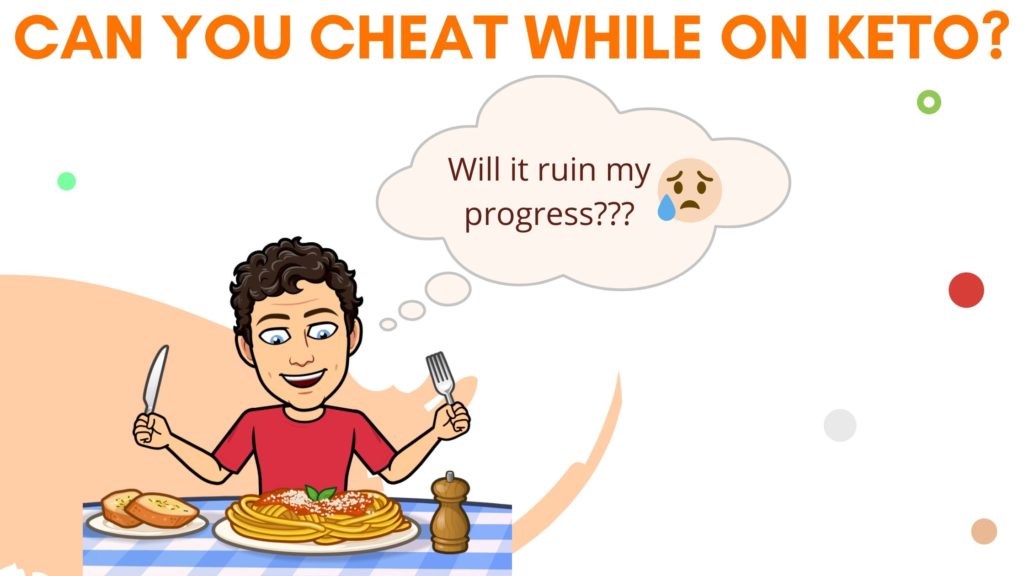
What happens when you cheat on keto?
Here is a list of things that can happen when you decide to hop off the keto wagon:-
1. Blood sugar spike:
This is one of the reasons why having a cheat day isn’t recommended for diabetics.
When you eat significantly high-carb meals after weeks of low carb diet, the blood sugar spike can be dangerously high.
2. Bye-bye ketosis:
Just one unplanned cheat meal is enough to throw you out of ketosis for next few days.
Consider this: If your daily carb limit on keto is less than 25 grams, a cheat meal with 25 or more grams of carbohydrates will probably get you out of ketosis.
3. Weight Gain:
There are chances that you will immediately notice some weight gain the next day after your cheat meal. However, most of it will be water weight.
Most people tend to go overboard with their cheat day and end up having way too many calories in a single day. Additionally, having too many carbs will put you back into fat-storing mode.
4. Cravings:
Having a high-carb meal on a keto diet can send you into a loop of further cravings and bad decisions.
When you introduce carbs into your body after weeks of following the keto diet, it can have a “relapse” effect on your mental discipline.
Many sugar cravings stem from a blood sugar imbalance. When you indulge in a high carb meal, your body starts craving those foods again for the instant burst of energy.
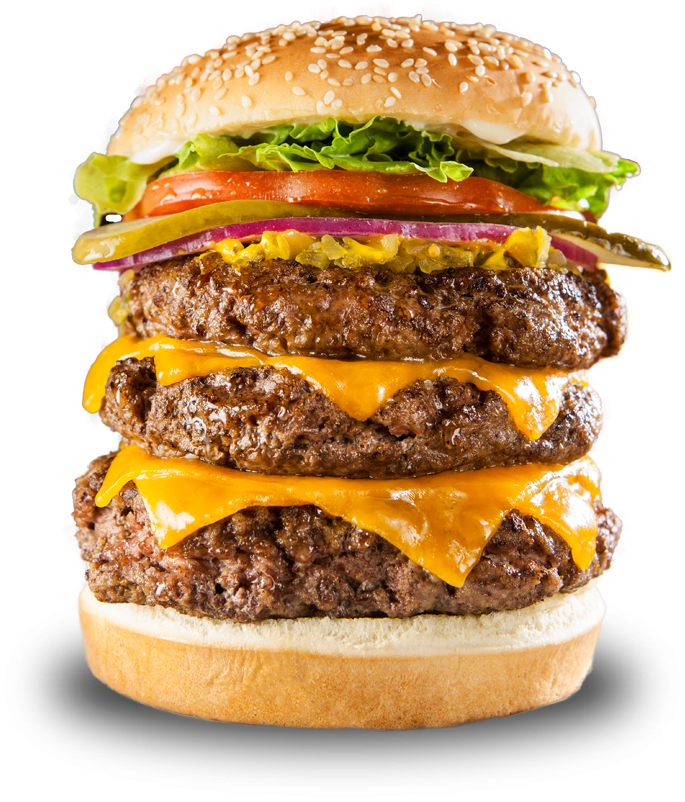
5. Keto-flu again:
When you go over and above your daily carb limit, chances are that you’ll be thrown out of ketosis.
What happens next is a series of unpleasant symptoms aka the keto-flu (headache, diarrhea, muscle cramps, dizziness, cravings) which you experience when the body transitions back into ketosis.
To discipline your mind and avoid the urge to cheat on keto, try keeping carbs out of your sight, plan your meals in advance and practice mindfulness or mindful eating.
Whatever be the reason, it is definitely possible to have cheat meals on your keto diet and still lose weight. However, the impact of cheat days will depend on how often you cheat and the type of meals you indulge in.
Read this keto cheat day guide to make sure you minimize the chances of ruining your progress if you decide to sinfully satisfy those taste buds!
Intermittent Fasting with Keto
If you are someone going through a plateau, or simply want to boost your results, then intermittent fasting can be a great addition to your low carb diet.
Intermittent fasting is not a diet but instead an eating pattern in which you alternate between periods of fasting and eating. For example, having an eating window of 8 hours and a fasting window of 16 hours.
Combining the keto diet with intermittent fasting will help you reach ketosis faster than a keto diet alone. It may also result in higher fat loss.
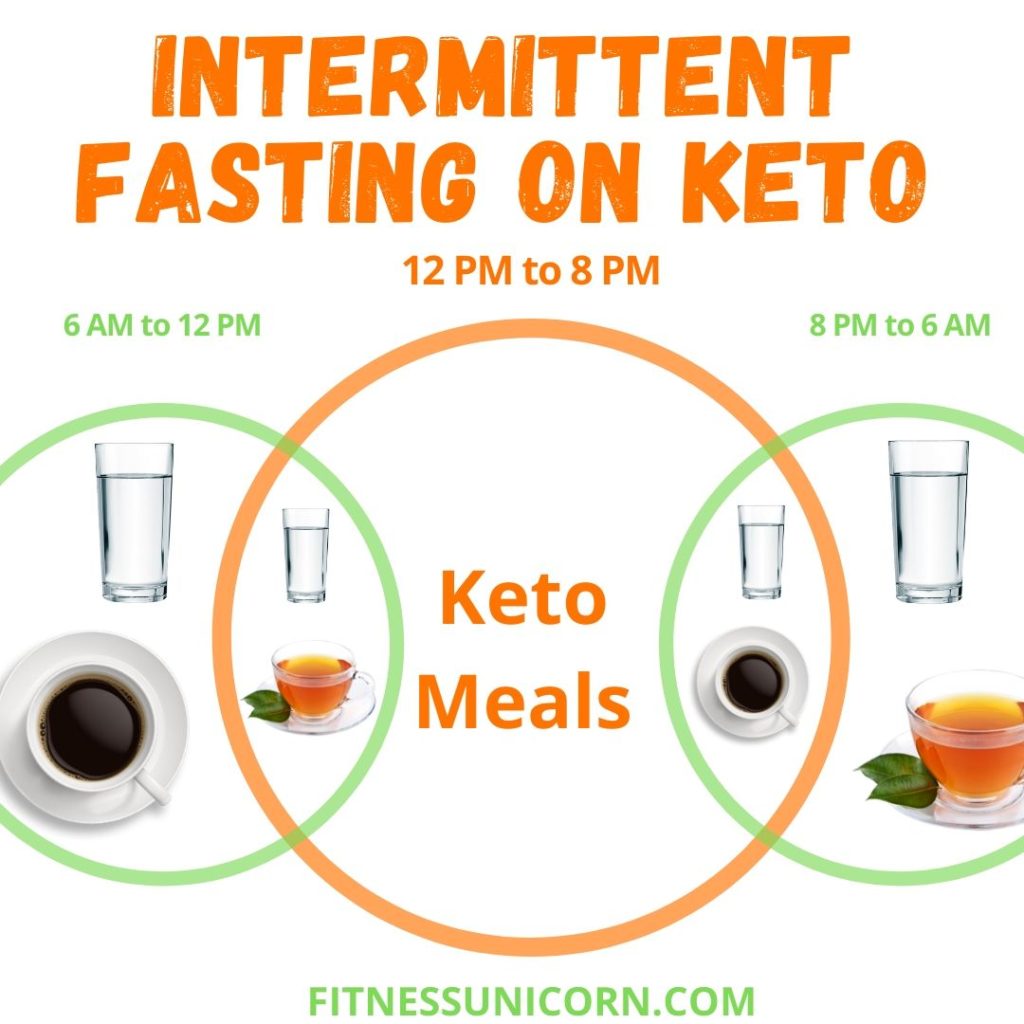
So you will have all your meals within the eating window and stick to zero-calorie beverages like water, green tea, and black coffee, in your fasting window.
The keto diet increases levels of ketones in the body; during intermittent fasting, ketones are also increased.
“The brain will rely less on glucose for energy when in a state of nutritional ketosis. Therefore, the transition into a fasted (ketogenic) state during the day eventually becomes seamless after eating low-carb or ketogenic for a few weeks.”
Dominic D’Agostino, PhD, founder of KetoNutrition.org.
Who should try intermittent fasting with keto?
Anyone who has been following the low carb keto diet for more than two weeks can reap the additional benefits of intermittent fasting.
Who should avoid intermittent fasting with keto?
For people with diabetes or prediabetes, supplementing keto diet with intermittent fasting is strictly not recommended. If you have chronic kidney disease, a past of eating disorders, any type of cancer, or are pregnant or breastfeeding, you should ideally stay away from this combined diet plan.
Keto and IF may not be a good fit even separately, for people falling under these groups. Check with your healthcare team.
Note that while this method may work miraculously for some, it’s not a great fit for everyone. If you notice strange changes in your body on this combination, stop immediately and consult your healthcare provider.
Keto and Diabetes
The ketogenic (keto) diet, is high in fat and low in carbs, which can ease diabetes symptoms by changing the way your body stores and uses energy.
If you experience high blood glucose levels, eating too many carbs can be dangerous. By shifting to a high fat diet, some people experience reduced blood sugar.
Even though limiting carbs (especially sugar and other simple carbs) is good for health, it’s not clear if this diet alone can cure diabetes. However, weight loss is generally good for diabetes and high blood sugar levels, whether it’s from the Keto diet or any other low carb diet.
Potential Dangers of Keto in Diabetes
A ketogenic diet increases blood ketone levels significantly. When you have too many ketones, you may be at risk of diabetic ketoacidosis (DKA).
DKA is commonly prevalent in type 1 diabetes where blood glucose is very high and can arise from a lack of insulin. Although very rare, DKA can be a possibility in type 2 diabetes if ketones level shoots up drastically.
If you’re on the ketogenic diet, it’s a good idea to test blood sugar levels throughout the day to make sure you stay within the recommended range. You can also use ketone testing kits to ensure you’re not at risk for diabetic ketoacidosis.
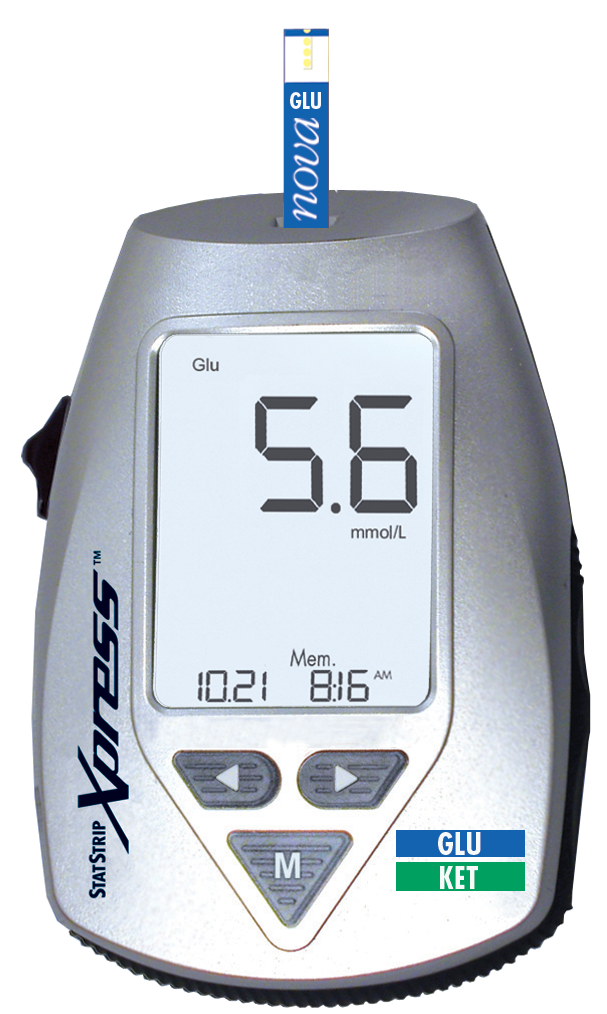
Symptoms of DKA include:
- Consistently high blood sugar
- Having a dry mouth
- Frequent need for urination
- Nausea
- Breath with fruit-like odor
- Difficulty breathing
Other than the high fat intake, there’s also a chance of lowering blood sugar, or hypoglycemia, from restricting carbs too much. This is especially true if you take insulin medications and don’t change your dosage.
A Keto diet can improve blood sugar levels while also reducing the need for insulin. However, make sure to consult with a healthcare provider before making drastic changes to your diet.
Is Keto Safe?
There aren’t many diets that spread like wildfire, but keto is an exception.
Ketogenic diet has proved to be a massive success for people struggling to shed pounds of weight and achieve unbelievable results.
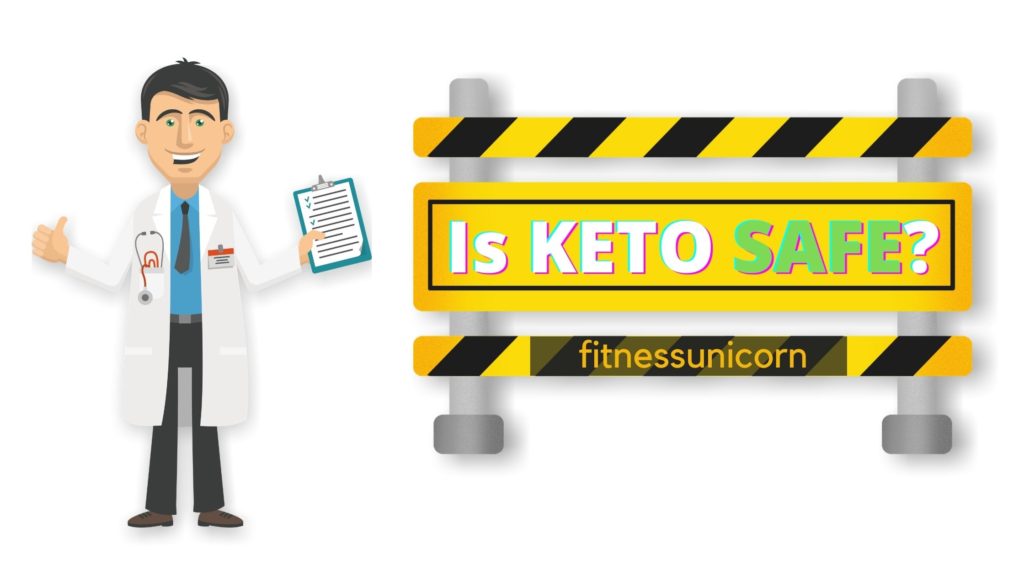
The uniqueness and carb-restrictedness of this special diet have left many experts wondering about the safety of adopting this eating style.
1. Keto-Flu
As discussed previously in this article, keto-flu refers to a host of unpleasant short-term side effects that you experience while transitioning to ketosis.
The symptoms of the dreaded keto-flu include bad breath, mood swings, muscle cramps, and fatigue.
While these feelings aren’t desirable, they do not cause any harm to your body other than a few days of discomfort. The symptoms typically disappear within a week as you get efficient into ketosis.
2. Ketoacidosis
Keto diet is wrongly linked with ketoacidosis, which is a dangerous condition that occurs in diabetics. Symptoms of ketoacidosis involve abdominal pain, nausea, vomiting and mental confusion. It sometimes requires immediate hospitalization to treat the patient.
It is quite unlikely that ketosis would cause life-threatening changes in healthy adults without diabetes.
3. Nutrition Deficiency
The keto diet is highly restricting in terms of the foods you can eat, which limits your intake of natural vitamins and nutrients from many food groups (such as grains).
This increases the chances of getting into nutrient deficiencies if you are not cautious. Just sticking to oil, meats, and cheese isn’t a good idea.
One should incorporate green-leafy and over the ground vegetables like kale, broccoli, cauliflower in a safe and healthy keto diet meal plan.

The history of keto dates back to the 1920s where it was first used to treat epilepsy in children. Our sources believe that it was thoroughly researched and shown to be quite safe when even in this population.
Most of the research is small and done on animals and there is a lack of proper in-depth studies pertaining to the long-term consequences of a keto diet.
Read our guide keto diet side effects to study the topic in more detail.
Keto, Atkins & Paleo
When it comes to a low carb diet for weight loss, the most common names we hear are Keto, Atkins & Paleo.
All of these are low carb diets but your overall goals will determine the perfect one for you.
Keto
Keto is focused on a diet high in fat and low in carbs. There is no distinguishing between different types of fat i.e. saturated, unsaturated, polyunsaturated, etc.
Major ingredients of a keto diet plan include meat, seafood, eggs, dairy, fats, and oils.
The main goal of starting a keto diet is to achieve ketosis, which is a metabolic state that utilizes fat for energy instead of glucose (from carbs). Daily carb intake for a typical keto diet is well under the 50-gram mark.
Benefits of keto include improved fasting insulin, balanced hormones, weight loss, reduced symptoms of depression, and anxiety.
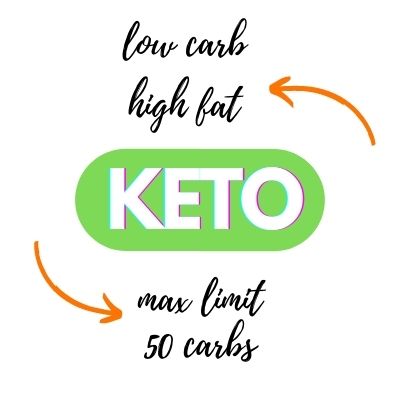
Keto is comparatively a more restrictive diet in terms of carbs, as compared to Atkins and Paleo. But the results for weight loss can be significant, especially in the immediate short term.
Atkins
Dr. Robert C. Atkins created the Atkins diet in the 1970s. It’s widely known as a way to lose weight that also benefits various health issues, including type 2 diabetes.
The classic Atkins diet consists of four phases — the first phase starts with having 20 to 25 grams of carbs per day and ends with phase four where you can have up to 100 grams of carbs every day.
The largest percentage of foods in the Atkins diet pyramid include meats, eggs and seafood.
One of the major points of difference between keto and Atkins is the proportion of proteins in the diet. A typical Keto diet plan gets 15-20% calories from protein whereas Atkins recommends 30% of calories to be sourced from proteins.
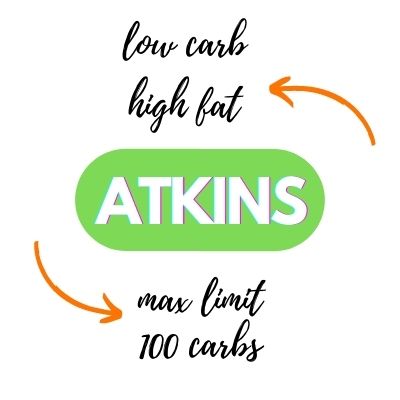
Atkins is a low carb diet that ranges from 20 to 100 grams of carbs. Benefits of Atkins include increased weight loss, less acne, fewer headaches, and decreased GERD (gastric reflux).
Paleo
The Paleo diet (aka “caveman diet”) is a diet that emulates how our ancestors ate in the Paleolithic era. It focuses on the whole foods diet which was well suited for hunters and gatherers lifestyle.
The main aim of a paleo diet is having wholesome, natural, and unprocessed foods without any specific focus on carb restriction. But the low carb aspect comes naturally as the diet avoids all grains.
Paleo diet prohibits all dairy, legumes, grains, and processed foods, which are considered as inflammatory. A major portion of the diet consists of fats, meats, eggs, seafood, non-starchy vegetables, nuts, and seeds.
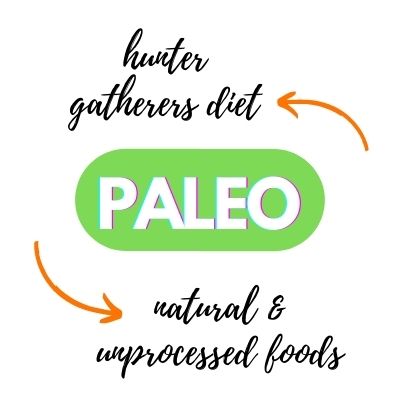
Paleo diet emulates the diet of hunters and gatherers in the Paleolithic age. It emphasizes wholesome, natural, and processed foods. Benefits of Paleo include increased weight loss, higher levels of energy, and better gut health.
Is Keto Good for Me
If you have landed here, chances are that your primary goal is weight loss. A healthy individual can definitely reap the benefits of weight loss through this low carb diet.
You are well suited for keto if:
- You can dedicate a few months to your body and develop self-control
- You want to see great results in a relatively short amount of time
- Your healthcare provider declares you fit and healthy to embark on the keto journey
Who Should Avoid Keto
There are a few groups of people that aren’t well suited for the ketogenic diet. These include:
- Elite athletes, powerlifters and professional bodybuilders who want quick bursts of energy in every workout
- People who want to lose weight quickly, without putting in efforts for keep it off afterwards
- Anyone with pancreatitis, liver failure, kidney disorder, or other fat metabolism disorders;
- Diabetic patients who have a history of diabetic ketoacidosis.
As in the case of the most restrictive diets, children and pregnant women or breastfeeding moms should avoid keto unless otherwise instructed by their healthcare consultants.
Practical Tips for Beginners
Here are a few practical tips for beginners on the keto diet. This list was compiled after inputs of many keto practitioners around the world.
1. Slowly ease into the diet
If you are someone who relies on bread and other high carb meals, then suddenly going cold turkey might be a shock for you mentally as well as physically.
Additionally, you are more likely to experience symptoms of keto-flu if you shift from carbs to fats within a day.
You should slowly ease your way into the keto diet by gradually cutting out high-carb meals from your food. Eliminate all sugars first, such as soda and candy, followed by complex carbs like bread and pasta, and starchy veggies, and then finally cut out all fruits (except berries).
2. Watch out for protein
“Since I can’t have more carbs, I think I can have as much as protein I want.” WRONG
Ideal protein content in a keto diet is 15-20%. Having way too much protein in your diet might end up being converted as glucose, which can throw you out of ketosis.
3. Fiber intake
You can maximize the nutritional benefits of ketosis if you get sufficient dietary fiber.
Consuming the right amounts of fiber while on keto can speed up your metabolism, balance your hormones, and keep you satiated for longer.
Aim for 30 grams of fiber in your keto diet. The key is to source fiber from non-starchy vegetables, nuts, seeds, and berries instead of traditional high-fiber foods like grains, beans, and legumes.
4. Beware of Stress
Keto and stress are two things that don’t go well together.
When you are stressed, your adrenal glands release the stress hormone called cortisol. It triggers the sympathetic nervous system which further releases more glucose into the bloodstream.
As a result, insulin levels rise and ketone production comes to a halt.

As you begin to enter ketosis, your body is already going through a major transformation in terms of hormones and energy sources. At this time you want to minimize the stress triggers and practice calming techniques such as yoga or meditation.
5. Stay Hydrated
One of the possible side effects when starting the low carb ketogenic diet is a reduction in bowel moments. You want to stay well hydrated to ensure healthy bowel moments. Additionally, it will also help you combat the symptoms of the keto-flu.
Take your body weight in lbs, cut it in half, and drink at least that many ounces of water every day.
If water doesn’t work for you and you struggle keeping up your daily intake, I have good news for you!
We keto-ers have plenty of options when it comes to beverages. You can have sparkling water, seltzer, flavored water, sugar-free sports drinks, and carbonated drinks like Zevia soda, which are made from natural sweeteners other than sugar.
6. Focus on healthy fats
It is true that the keto diet doesn’t differentiate among different type of fats, but you should ideally go for high-quality sources which are rich in omega-3 and omega-6 fatty acids.
Examples of high quality fat sources include avocado, salmon, flaxseed and coconut oil.
Save that bacon-egg-and-cheese skillet for the weekends!
7. Track macros
The three important macronutrients that will decide your fate in keto, are fats, proteins, and carbohydrates.
Tracking your macros is essential if you aren’t following a fixed diet plan (which we recommend you do) and assures that you stick to a high fat, moderate protein, very low carb diet. This is important because you need to know if you are eating within the guidelines for effective ketosis.
If you are showing a complete dedication in your diet by eating super low carb meals, and still not tracking the macros; you might be just wasting your precious time and efforts.
For example, even if you prepared the best low carb recipe in the world, eating way bigger portions will ultimately throw you out of ketosis.
Conclusion
A ketogenic diet can be great for people who are overweight, diabetic or looking to improve their metabolic health. It may be less suitable for elite athletes or those wishing to add large amounts of muscle or weight.
And, as with any diet, it will only work if you are consistent and stick with it in the long term.

